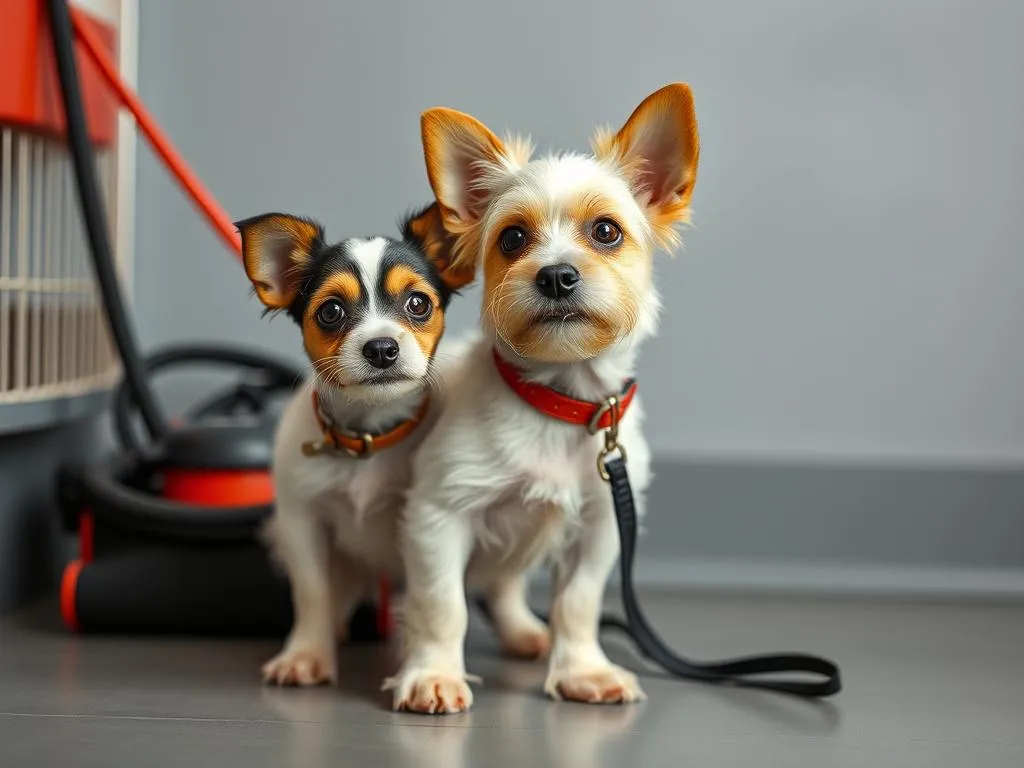
Introduction
Training your dog is one of the most rewarding experiences you can have as a pet owner. Not only does it help your furry friend learn essential commands and behaviors, but it also fosters a strong bond between you and your pet. Small dog breeds have gained immense popularity, not only for their adorable appearances but also for their manageable size, making them ideal companions for various lifestyles. Among these breeds, some stand out as the easiest small dogs to train, thanks to their intelligence, temperament, and eagerness to please.
In this article, we will delve into the world of dog training, focusing specifically on small dog breeds that are known for their trainability. We’ll explore the benefits of training for both dogs and owners, various factors influencing a dog’s trainability, and provide a detailed list of the top ten easiest small dogs to train. Additionally, we will share valuable training tips and resources to ensure a successful training journey.
Understanding Dog Training
What is Dog Training?
Dog training is the process of teaching a dog to perform certain behaviors in response to specific commands or cues. It encompasses various types of training, including obedience training, agility training, and behavioral training. Each type focuses on different aspects of a dog’s behavior, but all share the goal of improving communication and strengthening the bond between the dog and its owner.
Importance of Training Small Dogs
Training is especially crucial for small dogs, as they can develop behavioral issues if not properly socialized and taught. Benefits of training include:
- Behavioral Benefits: Training helps eliminate undesirable behaviors, such as excessive barking or biting, making your dog more pleasant to be around.
- Safety and Socialization: A well-trained dog is more likely to respond appropriately in social situations, reducing the risk of accidents or aggressive encounters.
- Strengthening the Bond: Training sessions create opportunities for interaction, building trust and affection between you and your dog.
Factors Influencing Trainability
Several factors influence how easily a dog can be trained:
- Breed Characteristics: Some breeds are naturally more inclined to learn than others.
- Temperament and Personality: A dog’s disposition significantly affects its willingness to learn and follow commands.
- Age and Previous Experiences: Puppies are generally more adaptable, while older dogs may have ingrained habits that can be harder to change.
Criteria for Selecting the Easiest Small Dogs to Train
Temperament
The temperament of a dog plays a critical role in its trainability. Dogs that are friendly, eager to please, and responsive to their owners’ cues tend to be easier to train. Traits such as patience, curiosity, and a calm demeanor contribute to a successful training experience.
Intelligence
Intelligence is another significant factor impacting training ease. Some breeds are naturally more intelligent, making them quicker learners. Metrics for measuring dog intelligence often include problem-solving abilities and the speed at which they can learn new commands.
Motivation
Motivation is essential for successful training. Dogs that are motivated to learn and perform are generally easier to train. Positive reinforcement techniques, such as treats, praise, and playtime, can enhance a dog’s motivation to learn.
Top 10 Easiest Small Dogs to Train
Overview of the List
The following breeds have been selected based on their temperament, intelligence, and motivation to please their owners, making them some of the easiest small dogs to train.
Breed Profiles
Poodle (Toy and Miniature)
Poodles, whether Toy or Miniature, are known for their high intelligence and eagerness to please. They excel in various training methods, including obedience and agility training, and respond well to positive reinforcement. Their hypoallergenic coat also makes them a popular choice for allergy sufferers.
Bichon Frise
The Bichon Frise is a cheerful and adaptable breed that thrives on interaction with its owners. Their friendly nature and willingness to learn make them highly trainable. Consistent training sessions with plenty of positive reinforcement will yield excellent results with this breed.
Cavalier King Charles Spaniel
Cavalier King Charles Spaniels are affectionate and gentle, making them ideal companions. Their loving temperament aids in their trainability, and they respond well to commands. Basic training techniques, such as clicker training, can be highly effective.
Shih Tzu
Shih Tzus are alert and eager learners, making them another excellent choice for training. Their willingness to learn can be enhanced with fun training games and consistent commands. Patience is key, as they may have a stubborn streak at times.
Yorkshire Terrier
High energy and intelligence are hallmarks of the Yorkshire Terrier. Their playful nature makes training a fun activity, but consistency is essential. Using toys as rewards can help keep their motivation high during training sessions.
Dachshund
Dachshunds are known for their unique character traits, including a sense of independence. While they may require a bit more patience, they can be trained effectively with positive reinforcement techniques. Short, engaging training sessions work best for this breed.
Maltese
The Maltese is gentle and adaptable, making it an excellent candidate for training. Their friendly disposition allows for successful socialization, and they are generally eager to learn. Consistent commands paired with rewards will help reinforce their training.
Papillon
Papillons are highly intelligent and sociable, making them some of the easiest small dogs to train. Their love for human companionship drives them to learn quickly. Techniques such as agility training can be particularly enjoyable for this breed.
Boston Terrier
Boston Terriers are playful and eager to learn, which makes them highly trainable. Their lively nature can be channeled into training sessions that incorporate games and rewards, keeping them engaged and motivated.
Pekingese
Pekingese may be independent, but they can still be trained effectively. Their trainability increases with positive reinforcement and consistent commands. Training sessions should be kept short and enjoyable to accommodate their unique personalities.
Training Tips for Small Dogs
Basic Commands Every Small Dog Should Learn
Teaching basic commands is fundamental for every small dog. Essential commands include:
- Sit: A foundational command that establishes control.
- Stay: Important for safety and impulse control.
- Come: Crucial for recall in various situations.
- Heel: Helps maintain control during walks.
Consistency in training is vital, as dogs thrive on repetition and routine.
Positive Reinforcement Techniques
Positive reinforcement is an effective training method that involves rewarding desired behaviors. This can include treats, praise, or playtime. For instance, when teaching a command, reward your dog immediately after they perform it correctly to reinforce the behavior.
Socialization and Its Role in Training
Socialization is crucial for small dogs, as it helps them learn how to interact appropriately with other dogs and people. Early socialization can prevent behavioral issues later on. Take your small dog to parks, doggy daycares, and training classes to expose them to various environments and experiences.
Common Training Mistakes to Avoid
Training dogs can be challenging, and there are several common mistakes to watch out for:
- Inconsistency: Varying commands or rewards can confuse your dog. Stick to a consistent routine.
- Negative Reinforcement: Punishing your dog for mistakes can lead to fear and anxiety. Focus on positive reinforcement instead.
- Overtraining: Keep training sessions short and engaging to maintain your dog’s interest. Long sessions can lead to frustration for both you and your dog.
Conclusion
In conclusion, identifying the easiest small dogs to train can help potential dog owners make informed decisions that align with their lifestyles. The breeds mentioned in this article are not only trainable but also make excellent companions. Remember that patience, consistency, and positive reinforcement are key elements in successful dog training.
The journey of training your small dog can be incredibly fulfilling, leading to a stronger bond and a well-behaved companion. Whether you are a seasoned dog owner or a first-time puppy parent, investing time and effort into training will pay off in the long run.









